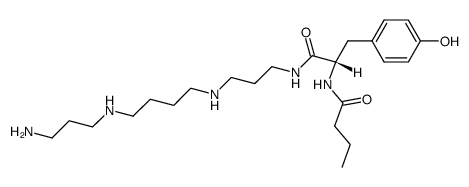Modeling noncompetitive antagonism of a nicotinic acetylcholine receptor.
Denis B Tikhonov, Ian R Mellor, Peter N R Usherwood
Index: Biophys. J. 87(1) , 159-70, (2004)
Full Text: HTML
Abstract
Models of closed and open channel pores of a muscle-type nicotinic acetylcholine receptor (nAChR) channel comprising M1 and M2 segments are presented. A model of the closed channel is proposed in which hydrophobic residues of the Equatorial Leucine ring screen the oxygen domain formed by the Serine ring, thereby preventing ion flux without completely occluding the pore. This model demonstrates a high similarity with the structure derived from a recent electron microscopy study. We propose that hydrophobic residues of the Equatorial Leucine ring are retracted when the pore is open. Our models provide a possible resolution of the nAChR gate controversy. We have also obtained explanations for the complex mechanisms underlying inhibition of nAChR by philanthotoxins (PhTXs). PhTX-343, containing a spermine moiety with a charge of +3, binds deep in the pore near the Serine ring where classical open channel blockers of nAChR bind. In contrast, PhTX-(12), which has a single charged amino group is unable to reach deeply located rings because of steric restrictions. Both philanthotoxins may bind to a hydrophobic site located close to the external entrance of the pore in a region that includes residues associated with the regulation of desensitization.
Related Compounds
| Structure | Name/CAS No. | Molecular Formula | Articles |
|---|---|---|---|
 |
Philanthotoxin 343
CAS:115976-93-7 |
C23H41N5O3 |
|
Open-channel blockade is less effective on GluN3B than GluN3...
2012-07-05 [Eur. J. Pharmacol. 686(1-3) , 22-31, (2012)] |
|
Neuroactive polyamine wasp toxins: nuclear magnetic resonanc...
1996-01-19 [J. Med. Chem. 39(2) , 515-21, (1996)] |
|
A sequential high-yielding large-scale solution-method for s...
2003-01-01 [Eur. J. Med. Chem. 38(1) , 117-22, (2003)] |
|
Potent and voltage-dependent block by philanthotoxin-343 of ...
1997-09-01 [Br. J. Pharmacol. 122(2) , 379-85, (1997)] |
|
Possible influence of intramolecular hydrogen bonds on the t...
2000-01-01 [Receptors Channels 7(3) , 227-36, (2000)] |